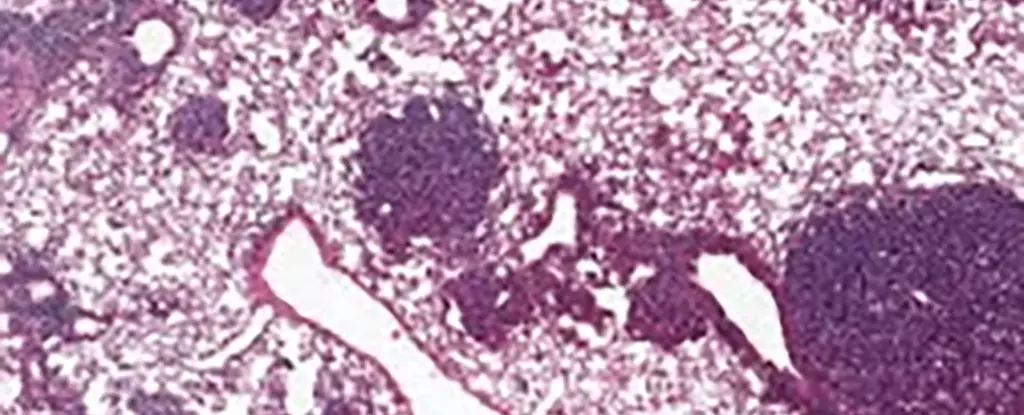Aging has long fascinated scientists, especially in the context of health and disease. Among the myriad of health risks that increase with age, cancer represents one of the most significant threats. Interestingly, the relationship between age and cancer risk isn’t linear—while the likelihood of developing cancer escalates through the 60s and 70s, it surprisingly declines past the age of 80. Recent research endeavors aim to unravel this paradox and shed light on the biological mechanisms at play.
Recent studies focusing on lung cancer have investigated the behaviors of alveolar type 2 (AT2) stem cells, which play a critical role in lung health. These stem cells not only facilitate lung regeneration but are also believed to be precursors to various lung cancers. Researchers, including a team from the Memorial Sloan Kettering Cancer Center, have identified that older mice exhibit elevated levels of a protein called NUPR1. This protein appears to alter cellular behavior, making cells act as if they are iron-deficient, despite having excess iron available. This paradoxical scenario limits the regenerative capacities of AT2 cells, leading to a decrease in both healthy tissue proliferation and harmful tumor growth.
What is particularly striking about this finding is the suggestion that aging processes reduce cellular renewal capabilities. This could explain why older individuals, despite often possessing higher levels of mutations and potential cancer triggers, might experience lower cancer rates. The concept posited by researchers—that aging diminishes the “runaway growth” seen in cancer—opens avenues for further exploration into cellular aging mechanisms.
The implications of NUPR1 are not confined to animal studies; similar trends have been observed in human cells. Experiments that manipulated NUPR1 levels or adjusted iron availability revealed that the growth potential of these cells could be increased. This finding suggests a promising path forward in developing therapies that modulate iron metabolism in older adults. Such interventions could prove essential, particularly for demographics experiencing long-term health issues following respiratory infections, such as COVID-19.
Moreover, researchers have identified a connection between NUPR1 and processes like ferroptosis, a form of cell death linked to iron. The study indicated that older cells are less prone to undergo ferroptosis, potentially making them more resilient to emerging cancer therapies that leverage this mechanism. As studies continue to evolve, it becomes clear that understanding the functional iron deficiency in aging cells might be pivotal for effective cancer intervention.
These revelations emphasize the urgency of preventative measures against cancer, particularly for younger populations. As noted by the researchers, harmful activities such as smoking or excessive sun exposure could have even more significant implications than previously recognized. This insight urges health professionals to reconsider strategies for cancer prevention, shifting some focus from purely reactive treatments to proactive health education.
The multifaceted relationship between aging, stem cell function, and cancer risk underlines the need for a more personalized approach in cancer therapies. Each individual’s cancer journey may vary significantly based on their age, overall health, and specific circumstances. As we glean more insights from ongoing studies, the hope lies in tailoring interventions to maximize efficacy and minimize risks, particularly in older populations with unique biological challenges.
Despite the progress, much remains unknown about how aging alters cancer biology. Identifying the nuanced relationships that exist between various biological factors will be crucial for advancing our understanding of cancer’s development and treatment across the lifespan. As researchers continue to delve into the complexities of age-related changes, it becomes increasingly vital to foster collaboration between fields to enrich our comprehension of cancer mechanisms.
To sum up, as intriguing discoveries unfold from studies on aging, stem cells, and cancer, they pave the path for innovative approaches to treatment and prevention. The interplay of various factors underscores the importance of comprehensive, age-sensitive strategies in the fight against cancer, emphasizing the need for personalized medicine tailored to individual patients’ circumstances.


Leave a Reply